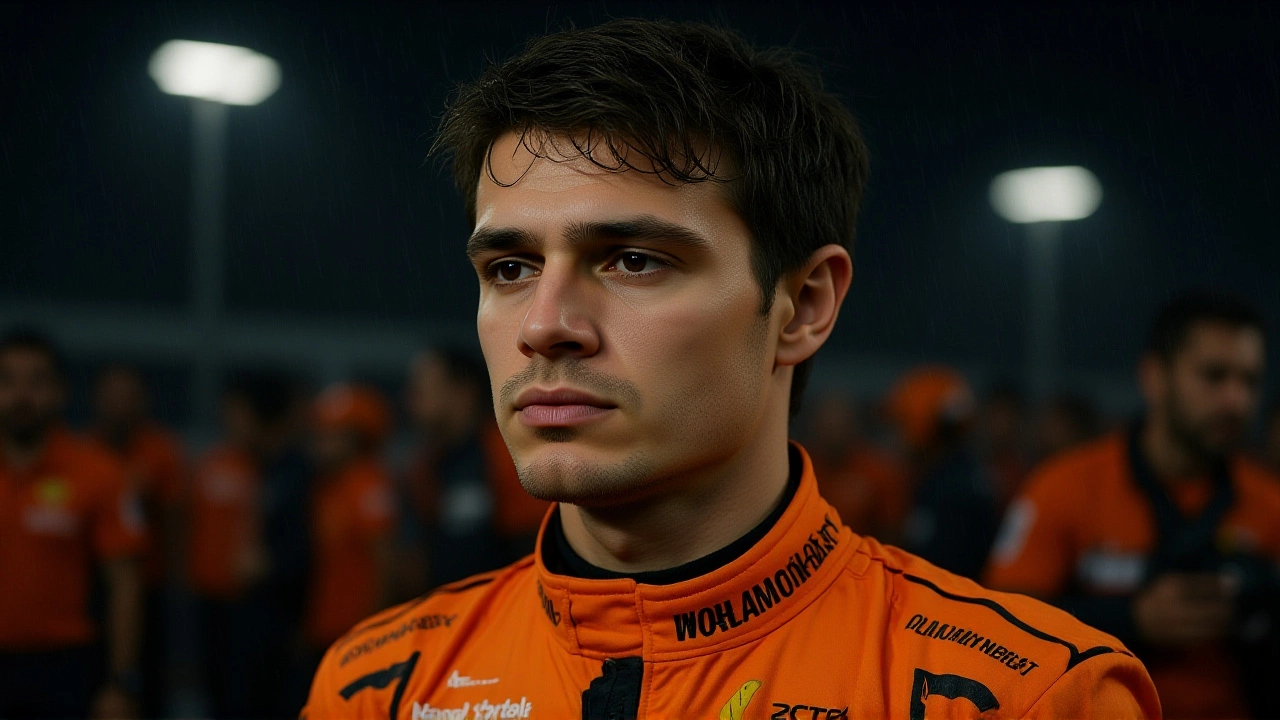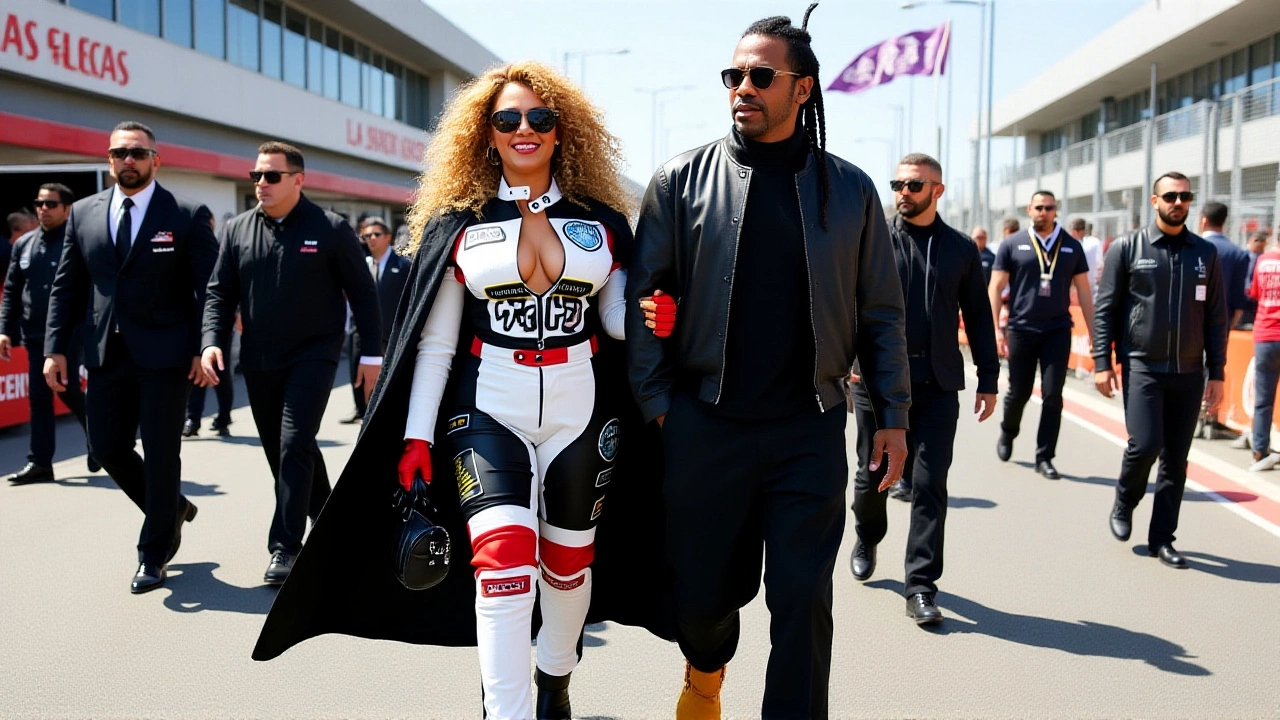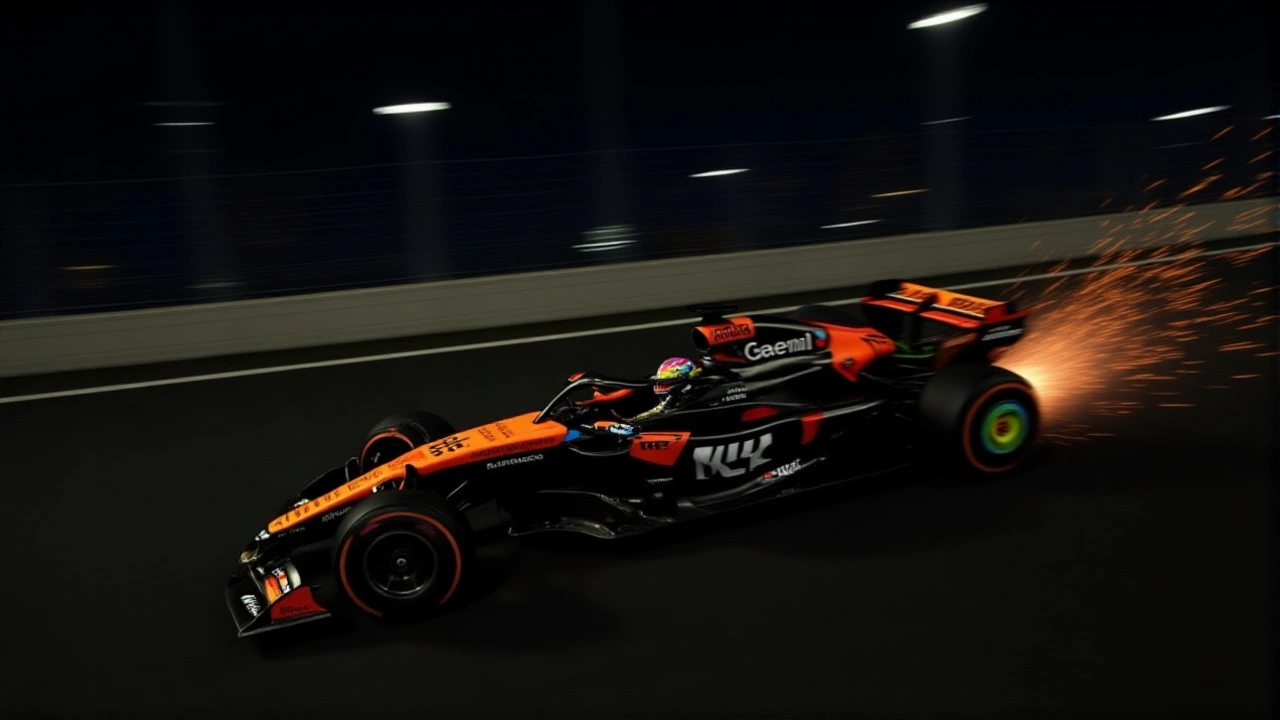When McLaren Racing Limited saw its two drivers cross the finish line in second and fifth at the Las Vegas Grand PrixLas Vegas Strip Circuit on November 23, 2025, they celebrated what looked like a masterclass in racecraft. By 6:46 PM UTC, that joy turned to shock: both Lando Norris and Oscar Piastri were disqualified for excessive rear skid block wear — a technical violation that erased all championship points and sent shockwaves through the 2025 Formula 1 season. The disqualification wasn’t just a penalty. It was a collapse. And it changed everything.
What Went Wrong on the Strip?
McLaren’s downfall wasn’t due to driver error or a mechanical failure during the race. It was a quiet, invisible killer: porpoising. The team had chosen an aggressive aerodynamic setup — low ride height, high downforce — mirroring the approach Mercedes-AMG Petronas Formula One Team used at Spa in 2024. On paper, it made sense. The Las Vegas Strip Circuit’s long straights and tight corners begged for maximum grip. But the track’s uneven surface, combined with dry race conditions unlike the damp practice sessions, turned the car into a jackhammer. The underfloor, designed to hug the tarmac, began slamming into it with such force that the skid block — a mandatory 10mm-thick wooden plank beneath the car — wore down to 8.7mm, violating Article 3.5.9 of the FIA regulations.Team principal Andrea Stella, who’s led McLaren since January 2023, admitted the team missed warning signs. "We didn’t simulate the full extent of the floor movement," he said. "The damage we found after the race — a small tear on the left side of the floor — wasn’t visible during practice. That’s on us. We pushed too hard. We’re sorry to Lando and Oscar. They didn’t deserve this."
The Championship Domino Effect
The fallout was immediate. Before Las Vegas, Lando Norris led the Drivers’ Championship with 312 points. Max Verstappen, driving for Oracle Red Bull Racing, trailed by 52 points. After the disqualification, Norris dropped to 262. Verstappen, who finished second in Las Vegas (and was promoted to first after the DQ), jumped to 286 — cutting the gap to just 24 points with two races left. Charles Leclerc of Scuderia Ferrari, who finished third in Las Vegas, now sits just 11 points behind Norris.It’s not just the Drivers’ Championship in turmoil. While McLaren had already clinched the Constructors’ title — their first since 1998 — the emotional blow to the team is profound. The car that dominated the season now looks fragile. And the questions are piling up: Why didn’t the simulator catch the porpoising? Why wasn’t a conservative setup tested in long-run simulations? Why risk it when the title was already won?

Engineering Under the Microscope
The blame doesn’t fall on one person. It falls on a system. Peter Prodromou, McLaren’s Director of Engineering, oversaw the aerodynamic philosophy that prioritized peak performance over margin of error. His team had run simulations based on practice data — but practice was run in cooler, damper conditions. The race day’s dry, 78°F asphalt changed everything. The car’s floor, designed to flex within a 0.5mm tolerance, ended up flexing 1.8mm. That half-millimeter discrepancy? It was enough to destroy the skid block.RacingNews365.com’s technical lead, David Tremayne, called it "a textbook case of over-optimization." He added: "McLaren didn’t break the rules. They just pushed the boundaries so far that the boundary broke them. It’s like running a marathon in racing flats because you think you’re fit enough. You’re not wrong to try — but when your feet bleed, you have to ask why you didn’t bring proper shoes."
What Happens Now?
With only two races remaining — the Yas Marina Circuit in Abu Dhabi on November 30 and the Interlagos Circuit in São Paulo on December 7 — the title fight is wide open. Verstappen, known for his composure under pressure, is now the favorite. Norris, visibly shaken, has vowed to fight back. "I’ve had bad luck before," he said. "But this? This feels different. We gave them everything. Now we’ve got to give them more."McLaren’s internal investigation is underway. The team has confirmed it will revise its entire simulation protocol, including mandatory long-run slick tire tests in all weather conditions before future races. They’re also reviewing the design of their floor’s structural supports — a fix that could take months.
But here’s the twist: this isn’t just about McLaren. It’s a warning to every team. In an era where margins are measured in millimeters, chasing perfection can be a trap. The FIA’s strict enforcement of skid block rules isn’t punitive — it’s protective. It keeps the cars from becoming too extreme. And in Las Vegas, McLaren learned the hard way that when you ignore the guardrails, the guardrails win.

Behind the Scenes: The Human Cost
For the engineers at McLaren Racing Limited’s Woking headquarters, the hours after the disqualification were silent. No cheers. No high-fives. Just screens flashing red error codes and the weight of a championship they’d already won — now overshadowed by the loss of two drivers’ momentum.One anonymous engineer told a colleague: "We built a car that could win the title. But we didn’t build one that could survive the race."
For Oscar Piastri, the disqualification means losing his first podium finish of the season. For Norris, it’s the second time in three races his title hopes have been derailed by mechanical issues — a cruel irony for a driver who’s been the season’s most consistent performer.
Frequently Asked Questions
How did porpoising cause the skid block to fail?
Porpoising occurs when a car’s underfloor generates so much downforce that it violently bounces up and down at high speed. McLaren’s low ride-height setup amplified this effect on the uneven Las Vegas surface, causing the skid block — designed to limit ground contact — to scrape and wear down far beyond the 10mm FIA minimum. The damage was exacerbated by a small tear in the floor, which increased flex and accelerated wear by over 300% compared to simulations.
Why didn’t McLaren catch this during practice?
Practice and qualifying sessions were run in cooler, damper conditions that suppressed porpoising. The race day’s dry, hot asphalt changed the aerodynamic behavior significantly. McLaren’s simulation models didn’t account for this shift, and crucially, they skipped long-run slick tire tests that would have revealed the floor’s instability. A half-millimeter error in predicted ride height became a 1.8mm reality — enough to destroy the skid block.
Who benefits most from McLaren’s disqualification?
Max Verstappen gains the most. His deficit to Lando Norris shrank from 52 to just 24 points, putting him in prime position to overtake Norris in Abu Dhabi or São Paulo. Charles Leclerc is now within striking distance too, making it a three-way battle. Verstappen’s team, Oracle Red Bull Racing, has been more conservative with setup this season — a decision that now looks like a masterstroke.
Is this disqualification fair under FIA rules?
Yes. The FIA’s skid block rule exists to prevent teams from running dangerously low ride heights that could compromise safety or create aerodynamic unfairness. While McLaren didn’t cheat, they pushed the design to its absolute limit. The stewards applied the rules consistently — the same rule that disqualified Red Bull in 2023 for similar wear. There’s no discretion here: if the plank wears below 10mm, you’re out.
Could McLaren still lose the Constructors’ title?
No. McLaren had already secured the Constructors’ Championship before the Las Vegas race. Their disqualification only affected driver points, not team points. However, the emotional and reputational damage is real. The team’s dominance this season is now clouded by a self-inflicted failure — a reminder that winning isn’t just about speed, but about reliability under pressure.
What changes will McLaren make going forward?
McLaren has confirmed it will overhaul its simulation protocols, mandating long-run slick tire tests under all weather conditions before every race. They’re also redesigning the floor’s structural supports to reduce flex. The team is working with the FIA to develop a real-time porpoising monitoring system for future seasons — a move that could become standard across Formula 1.





